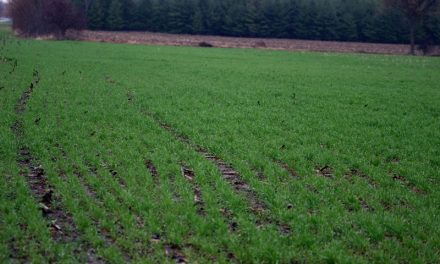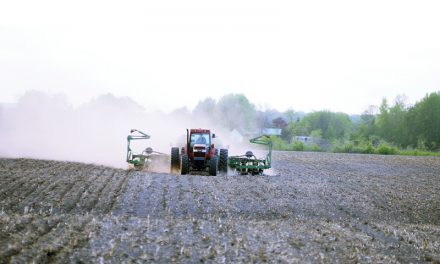Jakob Vogel (B.Sc. AGR)
Dairy Nutritionist
Let’s face it; over the past two years dairy producers have had serious issues with forage harvests. It started in 2016 when good quality forages were present but low quantities caused issues for many in terms of inventory. While 2017 brought the opposite effect when constant rain and few warm days created copious amounts of forages that were low in quality.
With costs of purchased feeds increasing and price of milk on the decline, the focus needs to be on better quality forages. Understanding that we cannot control the weather means that we need to stack the deck in our favour.
How many of you have taken the time already to go and walk your hay fields? Have there been any assessments of winter-kill? With increasing number of cows and little to no reserves, have we thought about planting additional forage land? What about storage – will we need some bags, another bunk, etc.?
At first when wanting to discuss forage quality we need to ask the question – what makes a good forage? Some producers and consultants will argue that the higher the protein the better the quality, while others will go based on fibre content. With the improvements and evolution in laboratory analysis there is a multitude of checkpoints when assessing forage quality. Although protein and fibre are good starting points for forage quality, other important points need to be taken into consideration as well.
Digestibility, ash, lignin, energy, and the fermentation profile (pH) are additional tools that can be used. For producers that are getting ready to chop, sometimes it is best to go back to basics when trying to improve forage quality – after all, garbage in garbage out.
 1. Stage of Maturity and Moisture
1. Stage of Maturity and Moisture
Depending on the stands contents (grass vs. alfalfa) we need to adapt our harvesting strategies accordingly. Grass silage should be harvested at boot stage to ensure an acid detergent fibre (ADF) content of roughly 30 per cent. While alfalfa normally will be harvested when the stand is at 10 per cent flower.
If we want to be more precise on the alfalfa harvesting stage, there is research from Ohio State University that correlates the neutral detergent fibre (NDF) content with the height of the plants within the representative quadrant.
The figure shows the different moisture contents that we aim to achieve, for different silages as well as different storage methods. By keeping track of the degree-days in your area, we will be able to keep a closer eye on crops that need to be harvested. Although this is something talked about with crop advisors, the same aspect applies to forage crops. The affect of those degree days will have an impact on the harvest timing as well as the sugar contents (energy and fermentability) of your haylage crops.
Tying in with the maturity and moisture is also the cut height. Now this is a very interesting topic in the field and when trying to make decisions because at first thought, we essentially need to sacrifice quantity for quality or vice versa. However, based on some fairly recent research (2008) at the Miner Institute in New York, it would seem that, by cutting shorter we could recuperate roughly 0.5 tonnes of dry matter per acre, however we run a much greater risk of “scalping” the field, essentially collecting soil along with the haylage.
Soil contamination in feeds may not seem like a big deal – added mineral right? – wrong! Actually soil contamination (ash content >10 per cent) can actually reduce the bioavailability of minerals found naturally within the plants. To add, bacteria (such as clostridium and listeria) and toxin causing bacteria (like fusarium spp.) can also be introduced which may lead to other issues during feed out. To be safe, the recommendation of cut height remains at four inches. Unless you have incredibly flat hay land and we are able to cut down to two inches, which is more risky, however you would collect increased volume.
2. Inoculate
The use of inoculants on silage is still very much a controversial topic of discussion on farm, since the benefits are not always apparent. These products typically will act as an added security and will help with the fermentation process. Although the use of these products will help improve the quality of the fermented feed it cannot replace proper packing density and chop length.
3. Chop length and packing
First things first, we need to make sure that our cutter bar is well sharpened and that we will be cutting our silage and not just shredding it. By cutting we maintain effective fibre which improves the overall quality of the forage – the same rule applies to corn silage. In theory we want our haylage crops to be chopped anywhere between 3/8 inch to 1/2 inch in length while corn silage should be anywhere between 1/2 inch and 3/4 inch in length. As with all theoretical numbers – how do we ensure that our chop lengths are okay as we are harvesting and unloading into our storage unit? Well luckily enough, the Penn State particle separator (PSPS, Penn State or Shaker Box) can be used to assess the chop length and ensure we are getting the job done properly.
When harvesting more mature silages we can get away with chopping a little shorter to try and improve the efficiency and rate of passage of that more mature forage.
Packing is most important in piles, bunkers and bags – rule of thumb – “when you think you’re done, keep going.” Packing silage will play a key role in the spoilage and the fermentation of your feed.
4. Supply and demand
In an ideal world all producers would have a three to four month overlap from one year to another for inventory of fermented feeds to keep stability and consistency for the cows. In addition to the past two growing seasons there has also been significant increase in quota holdings, which means more cows to feed. With more cows to feed we need to look at increasing our inventories, starting off by making sure our land allocations will support the growing dairy.
Additional storage, whether in bags, bunks, bales or piles are all good options as long as the feed is managed properly and we limit waste as much as possible.
As a last minute message, remember to utilize your management team including your nutritionist and crop (forage) specialists to stack the deck on your side to make 2018 a great year for milk production and bigger margins.
Best of luck with the 2018 forage season to all!












